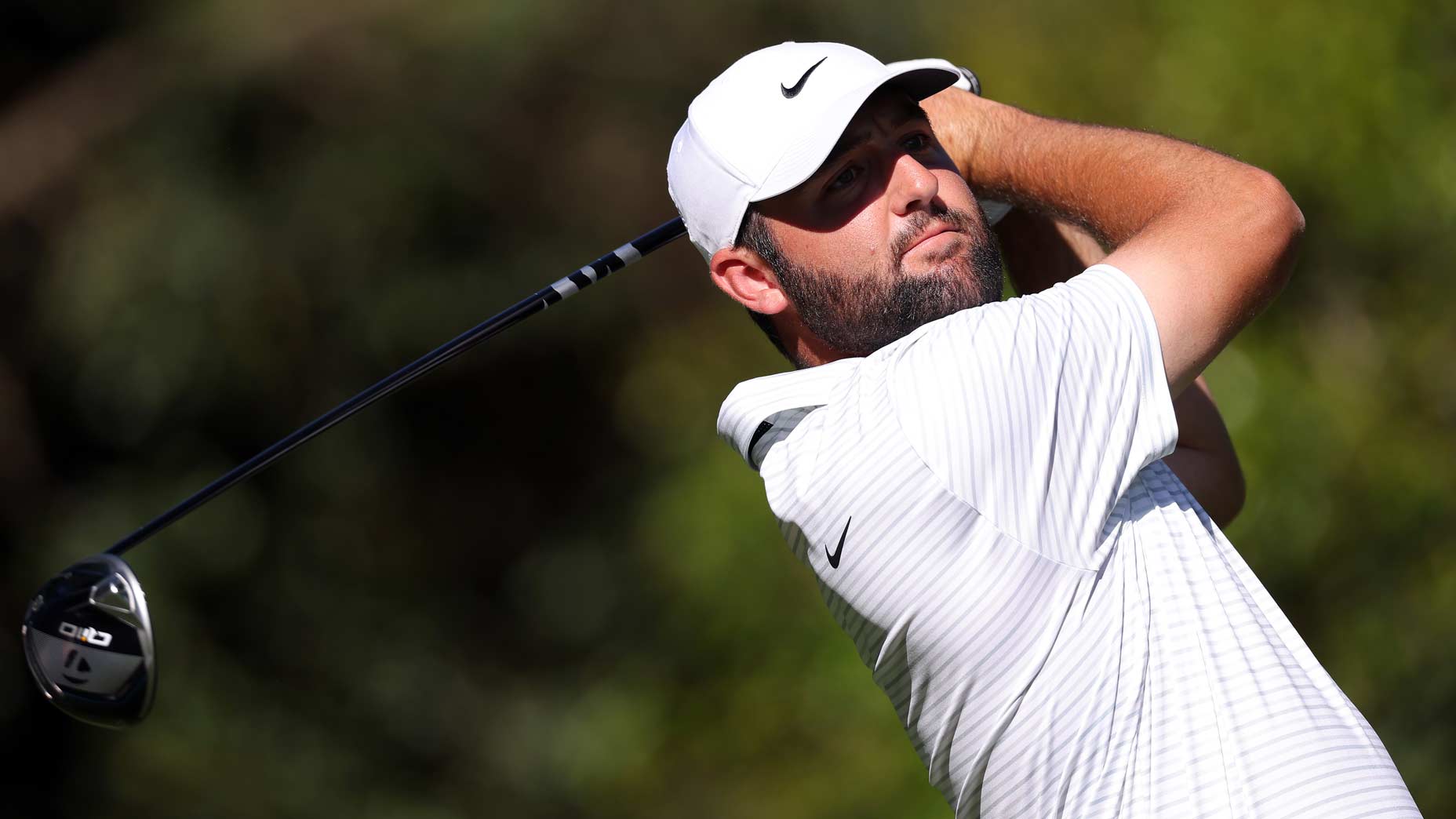For Tiger Woods, was 2022 the year that everything changed?

The PNC Championship is a reminder of all the things that have changed for Tiger Woods in 2022.
Getty Images
ORLANDO, Fla. — Tiger Woods’ day is over. In fact, it’s been over.
By the time 2:30 p.m. rolls around at the PNC Championship, it has been two hours since Tiger has swung a club at anything that resembles tournament speed. It is clear, even to the least-informed passerby, that Tiger will play no more serious shots, and will exert his injured right foot as little as possible. His day has retreated into 20-step segments — from his golf cart to the putting green, then from the putting surface to the greenside apron, and finally, from the apron back to his golf cart.
At this point in the afternoon, his existence at Friday’s pro-am borders on ceremonial. And at this particular moment, his audience would appear to be a group of strikingly enthusiastic college-aged boys.
“TIGER! TIGER!” The boys wail in his direction as he zips up the 15th fairway. “PLEASE! TIGER!”
“I can hear you, you know?” He shoots back, and the boys fall into a fit of laughter.
Tiger grins to himself and steps on the gas.

On the weekend of Tiger Woods’ final competition of 2022, it is perhaps fitting to remember the way it began. In April, at Augusta National, completing yet another comeback.
Of course, it did not matter that this comeback was unlike any of those that came before it. The spinal fusion had seemed small next to the comminuted fractures of his tibia and resultant surgeries on his foot and leg, but those who watched the Masters expected what they always saw from Woods at Augusta. For a little while, they even get their wish.
But then came the weekend, and something changed.
On the course, his game unraveled. He shot 78 on Saturday and Sunday. He finished in 47th place. He grimaced and grunted and groaned through every tee box and green.
But when he wasn’t swinging, something else was different. He wasn’t the same stone-faced killer of his early years, nor was he the aging yet fearsome force of his more recent ones. He waved to fans, he smiled at strangers, he offered pointed and thoughtful responses, he cared less about shielding his emotions. He seemed … joyful in the act of competition.
“I fight each and every day,” he said at the time. “Each and every day is a challenge. Each and every day presents its own different challenges for all of us. I wake up and start the fight all over again.”
He continued the fight from home, even as his sport fell under siege. As LIV Golf exploded onto the scene in early June, luring a chunk of golf’s best players and the attention of the sports world, Woods privately wrangled support among PGA Tour officials and players. Later, he was instrumental in organizing the players-only meeting that resulted in wholesale changes to the PGA Tour model.
More publicly, he blasted the new league in a surprisingly candid Open Championship press conference and reiterated it again at another free-wheeling presser at the Hero World Challenge.
It was striking to see Woods so direct, so forthright in his intentions, and stunning to see him enter the fray of controversy so freely, particularly after a career devoted primarily to the opposite. Maybe that was a sign of how much has changed in the sport in this strange, turbulent year; or maybe it was a sign of how much has changed with its most prominent figure.
“Yes … yeah,” he said Friday when asked if he’s thought about his legacy more this year than in years past. “The golf ecosystem has forced everybody to rethink how we look at the game and how we need to make the game better. So this whole year, for all of us who have been a part of golf, we’ve had to look at it from a different lens.”
A lens that focuses, among other things, on the image Woods will leave behind when his playing days are over. This year, Tiger’s words, his actions and his time have all sharpened that new goal: making the game better. Even in a year defined by a Civil War, he feels he’s done that.
“I really do [think the game is in a better place],” he said. “I think that golf has had to relook at itself globally and how it can be better and how we can make the portals for the next generation of players better. So, I mean, you look at the average age of the Presidents Cup, it was 26 years old. It’s not like the Ryder Cups and President Cups I was a part of when I first came out here, most of the guys were in their 30s and 40s. Golf has become younger, and we need to have access for these kids to be able to experience that now.”
But the work of making golf better isn’t only about elevating young talent, it’s about elevating all talent, about engaging with new audiences, and about closing the gaps the sport has long struggled to fill. That is what brought Tiger to the players-only meeting, to the golf tech startup TMRW Sports, and slightly more recently, to the PNC Championship.
When Woods talks about a younger generation, it’s clear he doesn’t just mean on Tour. He’s talking about the generation he’ll never compete against. About the one he might never know. And about his son, who will join him for the remainder of the weekend at the Ritz Carlton Golf Club.
The future is the work of the elder statesman. It is not often gratifying, but it is no less essential. It is the work of amplifying small tournaments, evangelizing for the sport’s future, and ever-so-often, making nice with attention-hungry crowds.
In this context, it makes a bit more sense why Woods is choosing to play through considerable pain in order to participate in an event he called a “hit-and-giggle” as recently as a year ago. In 2022, it’s not about him anymore. It’s about them. It’s also about Charlie.

Tiger arrived on the 16th tee box on Friday just as the younger Woods plunged his tee into the ground. Charlie’s score has struggled today — the result of an apparent injury — but his swing has not.
Charlie lines up his shot, takes a few practice swings, and addresses. He blasts his drive, and Tiger lets out a low chuckle.
“Oooh, I like that one,” Tiger says, the smile spread wide across his face. “High tee, low ball?”
Charlie looks back in his direction and nods.
“High tee, low ball.”
“You know you get less spin that way, right?” Tiger says, prodding his son.
Soon he’s delivering a lesson on the nuances of tee height, spin rate, and shot shape. It’s heady stuff, the kind any golf nut would kill to hear, but Woods’ intended audience doesn’t seem quite as keen on listening. Charlie is staring down at his clubface, his mind apparently elsewhere.
“Hey, this is important,” Dad protests, and Charlie finally meets his eyes.
Tiger’s day is over, but his work is only beginning.











